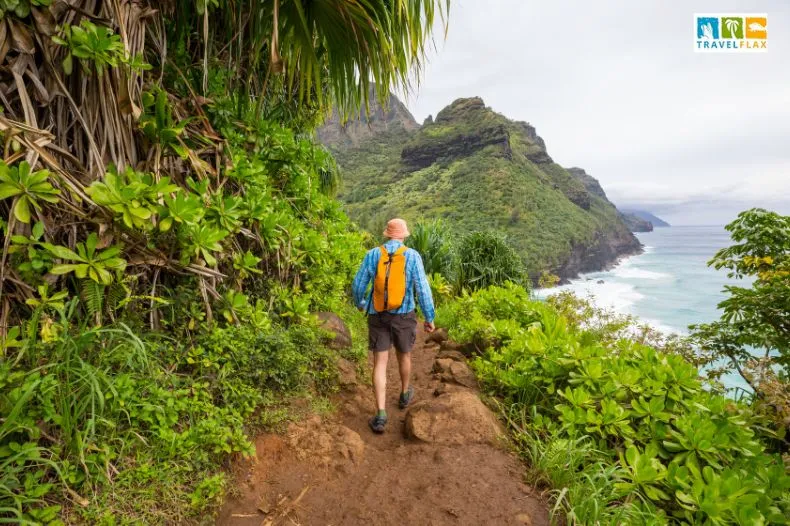
The White Road Hike Big Island of Hawaii is an adventure that tempts both locals and tourists with its breathtaking views and unique experiences. This trail takes you through lush greenery and offers a chance to see one of Hawaii‘s hidden gems, a natural waterslide tucked away in the Kohala Forest Preserve.
The hike not only provides stunning vistas but also a thrilling journey along a trail that navigates the edge of a canyon.
The journey begins at White Road, where hikers can get ready for a reasonable challenge that rewards them with panoramic views of Hawaii’s incredible landscape.
While the pathway may seem daunting due to its accessibility issues, the adventure is part of the charm for those looking to explore beyond the usual tourist spots. Alongside beautiful flora and fauna, hikers can engage with the spirit of Aloha that spreads across this island paradise.
Those who take on the White Road Hike are treated to more than just a trail; they discover a slice of Hawaii’s culture and natural beauty.
As they walk, the sounds of the forest and views of vibrant landscapes create an unforgettable experience. Understanding the hiking guidelines will enhance the experience, offering both safety and satisfaction.
Key Takeaways
- White Road Hike offers amazing views and a thrilling adventure.
- Starting at White Road, the hike challenges hikers with unique terrain.
- The hike offers a glimpse of Hawaii’s rich culture and stunning nature.
Planning Your White Road Hike Big Island
The White Road Hike on the Big Island of Hawaii offers stunning views and unique experiences, but it’s important to prepare carefully. Consider the best time to visit and essential safety tips to make your adventure safe and enjoyable.
Best Time to Visit
The ideal time to embark on the White Road Hike is during the dry season, typically from May to October. Rain can significantly affect trail conditions, making them slippery and dangerous. Check the weather forecast in advance to avoid unexpected downpours.
Morning hikes are recommended to avoid midday heat. Starting early also allows sufficient time to complete the trail at a comfortable pace. Elevation gain is moderate, so pace yourself and take breaks as needed.
Safety Tips and Preparations
Safety is a priority when hiking the White Road. Wear sturdy hiking boots to navigate uneven paths. A headlamp is crucial, particularly if starting early or finishing late. Ensure a good fit to avoid discomfort during the hike.
Pack plenty of water and snacks. The trail offers no services, so it’s essential to be self-sufficient. A small first-aid kit is wise for addressing minor injuries.
Stay informed about trail conditions and access rules, as sections of the hike may be restricted. Respect any signage and follow local guidelines to maintain safety and avoid unnecessary risks.
Using these strategies and tips, hikers can plan a safe and memorable White Road Hike experience.
Getting to the Trailhead
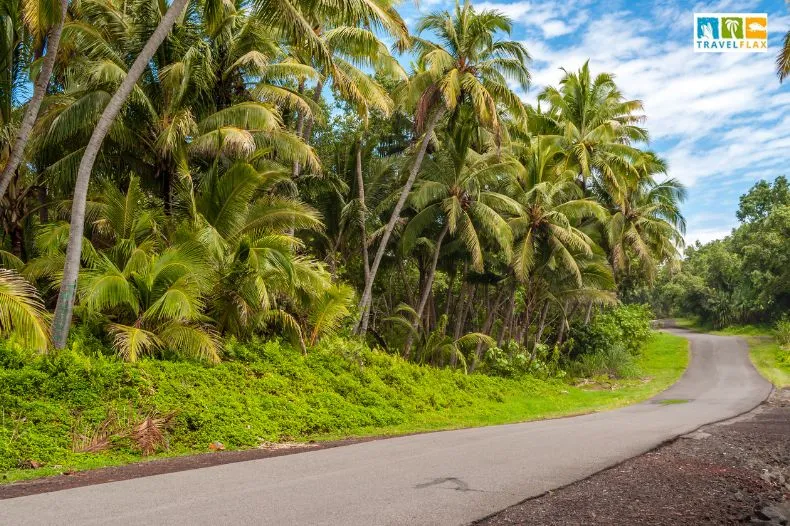
Travelers seeking the White Road Hike on the Big Island of Hawaii should be aware of the specific directions to reach the trailhead. It is important to know the parking situation and the path through Waimea to ensure a smooth journey.
Access and Parking
To access the White Road Hike, begin by heading east out of Waimea. Follow the road signs until you spot White Road. At the end of White Road, visitors will encounter a gate. Though accessing the hike is a popular choice amongst locals, it is essential to respect any posted signs indicating property boundaries.
Parking is typically available at the road’s end. Visitors should park on the right side of the road. Be sure not to block any entrances or driveways, as courtesy to locals is important. Parking space is limited, so arriving early can help secure a spot before the area gets busy.
The starting point is quite straightforward, making it easier for adventurers to get on the trail without confusion.
Navigating Through Waimea
The town of Waimea serves as the gateway to this trail. Travelers should use landmarks and road signs to navigate through this area efficiently. Waimea is known for its scenic views and local charm, providing a pleasant experience even before reaching the trailhead.
Drive carefully through this small town, observing speed limits and other regulations. It’s best to have a map or GPS ready, as roads can sometimes be tricky to navigate.
Enjoy the scenic drive and ensure all supplies are ready before setting out for the hike. With the right preparation, getting to the trailhead can be a hassle-free start to a memorable hike.
The Hike Experience
The White Road Hike offers a unique journey through lush landscapes and built structures. This popular yet challenging trail reveals diverse terrains, man-made water systems, and an adventurous ending at a natural waterslide. Each element combines to form an exciting outdoor experience for hikers.
Terrain and Ecosystem
The hike begins in Waimea, taking adventurers through the Kohala Forest Preserve. This area is rich in biodiversity, with towering trees and dense foliage creating a vibrant green canopy above.
Hikers may notice native Hawaiian plants and perhaps encounter some local wildlife, giving insight into Hawaii’s natural beauty. The path can be narrow and muddy at times, so appropriate footwear and caution are advised to manage these conditions safely.
Kohala Ditch and Water Pipes
The trail features historical sections, including the Kohala Ditch. Built in the early 1900s, this system of water pipes and tunnels was originally designed for irrigation purposes. Hikers will encounter remnants of these structures along the path.
These features highlight early engineering feats and provide a glimpse into Hawaii’s agricultural history. The still-functioning pipes occasionally guide water along the trail, adding to the hike’s ambiance.
Natural Waterslide Adventure
One of the main attractions of this hike is the natural waterslide. Formed by smooth rocks and flowing water, the slide ends in a refreshing pool that offers hikers a chance to cool off after trekking.
Located at the hike’s endpoint, this spot requires caution as the water can run swiftly. Despite the risks, many enjoy the thrill of sliding down into the pool, making it a memorable highlight of the adventure.
Flora and Fauna
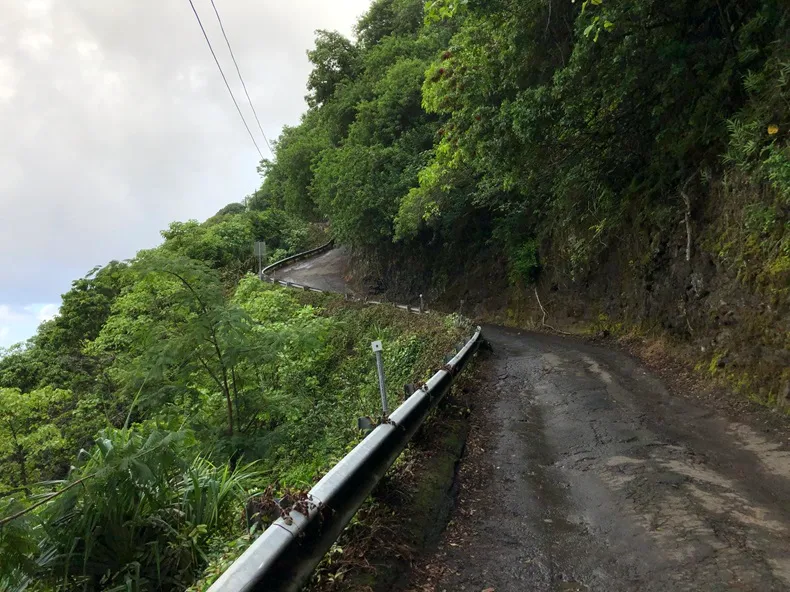
The White Road Hike on the Big Island of Hawaii offers a rich view of both unique mountain species and vital marine life. Understanding the delicate ecosystems of Mauna Kea and the conservation efforts for sea turtles is essential for appreciating the region.
Mauna Kea’s Unique Species
Mauna Kea is home to various species that thrive in its unique environment. Ohia lehua, with its striking red flowers, dominates the landscape. This tree supports many native bird species, providing both nectar and shelter.
Silversword, another notable plant, can be found at higher altitudes. These plants have adapted to the volcanic soil and harsh weather conditions, making them truly special.
Efforts are in place to preserve these flora amidst threats like invasive species. Conservationists focus on protecting native plants to maintain balanced ecosystems.
They actively monitor and manage the plant populations to ensure the survival of these unique species. Collaboration with local communities is crucial in these ongoing conservation activities.
Sea Turtles and Conservation Efforts
Hawaii’s waters are a nesting and feeding ground for several species of sea turtles, including the Hawaiian green sea turtle. These turtles face threats from pollution and habitat destruction.
Conservation organizations work tenaciously to protect these creatures, advocating for laws that curb harmful fishing practices and reduce plastic waste in the ocean.
Volunteers often participate in beach clean-ups to create safer environments for nesting. Education plays a key role in conservation, as local communities are informed about sustainable practices to protect sea turtle populations.
These efforts have led to a significant increase in turtle populations in recent years, showcasing the impact of dedicated conservation work.
Local Attractions
White Road Hike on the Big Island is surrounded by stunning natural beauty and delicious local food. Visitors can enjoy breathtaking views at the Waipio Valley Lookout and savor exceptional dining experiences in Waimea.
Waipio Valley Lookout
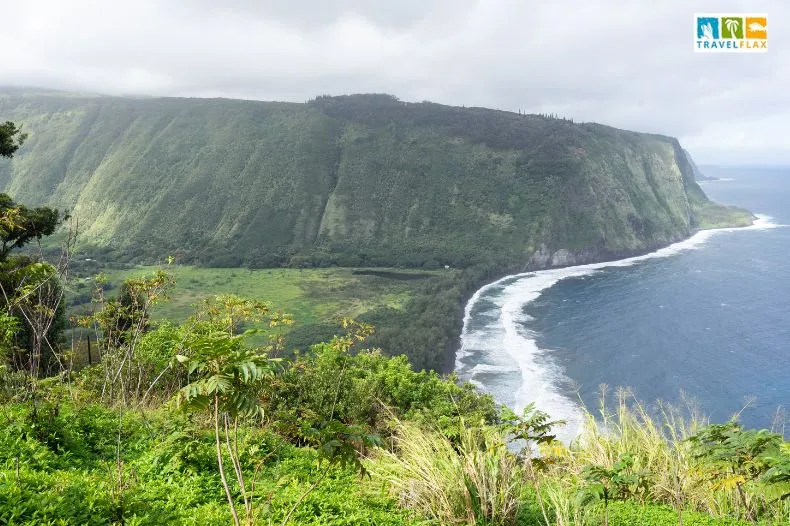
The Waipio Valley Lookout provides one of the most stunning views on the Big Island. From this vantage point, visitors can see lush greenery and the vast Pacific Ocean. The lookout is a perfect spot for photography, capturing the valley’s beauty and its surrounding cliffs.
The valley itself is known for its rich history and deep cultural significance to Hawaiians. Travelers often spend time taking in the sights and learning about its historical importance. Hiking trails nearby offer further opportunities to explore this unique landscape.
Culinary Delights in Waimea
Waimea is known for its vibrant dining scene. Visitors can find a variety of culinary delights, ranging from local Hawaiian dishes to fusion cuisine. One of the highlights is pho, a savory Vietnamese noodle soup, which has become popular in the area.
Many restaurants in Waimea focus on using fresh, locally sourced ingredients. This emphasis on quality makes dining here not only a treat for the tastebuds but also a way to support local farmers. Whether visitors are looking for a quick bite or a gourmet meal, there’s something to suit every palate in Waimea.
Hiking Guidelines
When preparing for the White Road Hike on the Big Island, it’s essential to be mindful of both conservation and the respect for private property. Following specific guidelines ensures the preservation of this beautiful area and maintains the privilege of exploring it.
Respecting Private Property
The White Road Hike begins near privately-owned lands. Hikers may encounter signs indicating restricted areas. It’s crucial to respect these. Ignoring such signs can lead to issues with landowners and potentially limit access for others in the future.
To stay on the right path, follow marked trails and avoid venturing off into fenced or signed areas. This prevents damage to the land and maintains good relations with property owners.
Additionally, parking should be done in designated areas to avoid trespassing. For example, parking outside the yellow gate can save hikers some expenses while adhering to rules. Respecting property boundaries ensures the hike remains accessible for everyone.
Leave No Trace Principles
Conservation during the hike is paramount. Following the Leave No Trace principles will help protect the natural beauty of the trail.
Always carry out what you bring in. Dispose of any waste properly to prevent littering, which can harm wildlife and mar the landscape. Staying on the designated path minimizes damage to plant life and prevents erosion.
Respecting wildlife by observing from a distance and not feeding animals is part of the Leave No Trace ethos. This helps keep the environment safe for hikers and the creatures that live there.
Finally, keeping noise to a minimum preserves the tranquility of the area and allows all hikers to enjoy the natural sounds of the environment. These guidelines help maintain the trail’s natural state.
Activities Beyond the Hike
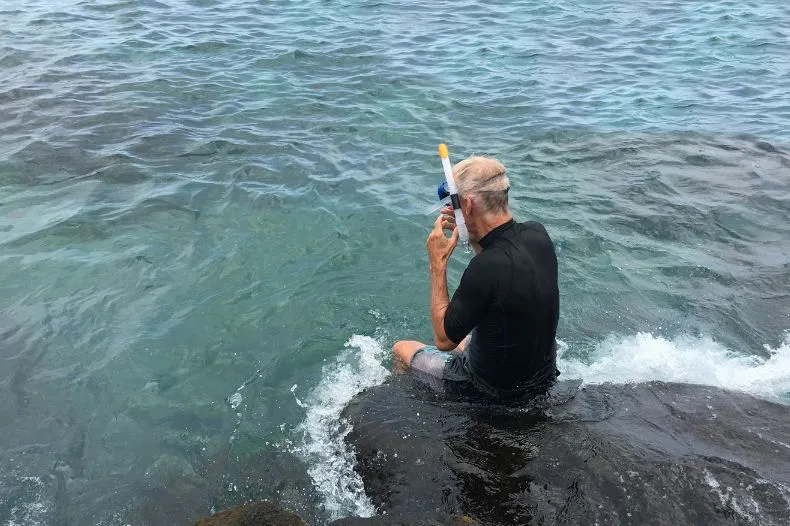
While exploring the White Road Hike on the Big Island, adventurers can enjoy other exciting activities nearby. The island offers snorkeling in vibrant underwater landscapes and discovering some of the most stunning beaches in Hawaii.
Snorkeling Opportunities
The Big Island is a prime location for snorkeling enthusiasts. Locations such as Kealakekua Bay and Honaunau Bay offer clear waters and diverse marine life. These bays are home to colorful coral reefs and tropical fish, making them ideal spots for underwater exploration.
Visitors might encounter sea turtles and occasionally dolphins, adding to the adventure. It is important to bring snorkeling gear or rent equipment from local shops. Safety precautions, like swimming with a buddy and checking local advisories, ensure a safe and enjoyable experience.
Exploring the Big Island’s Beaches
The Big Island boasts numerous beautiful beaches, each with unique features. Hapuna Beach is known for its white sands and crystal-clear waters, perfect for relaxing and swimming. Punaluʻu Black Sand Beach, on the other hand, presents a dramatic contrast with its black sand and nearby coconut palms.
For panoramic views and sunbathing, Mauna Kea Beach is a great choice. Each of these beaches can provide a day of enjoyment after a morning hike.
When visiting, it’s important to note the waves and currents, as conditions can change rapidly. Planning visits around peak sunlight can help travelers make the most of the island’s stunning scenery.
Frequently Asked Questions
The White Road hike on the Big Island offers a mix of beautiful scenery and unique features. Key aspects such as permits, facilities, and trail highlights provide essential information for visitors to consider.
Is the White Road hike on the Big Island permitted?
The White Road hike is located on the Big Island of Hawaii and is known to pass through private property. It’s crucial for hikers to verify access permissions before planning their visit, as unauthorized access can result in legal issues.
What facilities are available at the White Road hike starting point?
Visitors will find limited facilities at the starting point. It’s recommended to prepare for the hike by bringing water, snacks, and other necessary supplies. Restrooms and parking may not be readily available, hence planning ahead is important.
How long does it typically take to complete the White Road hike?
Completing the White Road hike usually takes around 3-4 hours. The time can vary based on factors like weather conditions, individual pace, and stops along the way. Hikers are encouraged to plan accordingly and start early.
Where can you find the access point for Narnia on the Big Island?
The access point for Narnia, a hidden spot on the Big Island, involves going through the White Road hike. Directions and more detailed information may be found in local hiking guides or online forums where hikers share their experiences.
Are there any waterfalls or slides along the White Road hike?
Yes, one of the attractions of the White Road hike is a natural waterslide, part of its unique landscape. Some areas also feature beautiful waterfalls. These features make the trek more adventurous and are often a highlight for many hikers.
